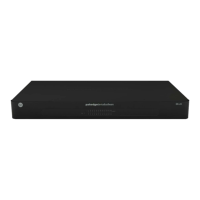42
Max Hops - maximum number of hops that would be required to get back to the main switch or to the
router. If not certain to what this number should be, it is best to use it at the Default of 20 hops.
Hello Time – The time in seconds between each Bridge Protocol Data Unit (BPDU). The BPDU are
messages that are used by switches that are included in the Spanning Tree process. These messages are
used to exchange information on how the network layout might have changed and determine the best
path cost (the shortest route to get from point A to point B). It is best to put this at 2 seconds.
Max Age – The maximum amount of time that a bridge port (the port that connects to the main switch
or the router), saves the BPDU configuration. The default is 20.
Forward-Time – The wait time from a bridge port (port that plugs into main switch or router), to change
from a listening to learning state. It is best to set this at 15 seconds.
Force Version - There are two options for the force version, STP and RSTP. They are described as below.
Spanning Tree Protocol (STP)
STP is one of the simplest forms of spanning tree and is the only option that you will find on our access
points and our routers. This version of spanning tree is more sensitive to physical changes (swapping
out switches or unplugging a network cable) in the network and might take up to one minute to
reroute when the physical network changes.
Rapid Spanning Tree Protocol (RSTP)
RSTP works the same way as STP but when physical changes are made on the network it will only take
about 5-6 minutes to reroute. It works this fast by actively monitoring the network for any changes.
This standard is also backwards compatible with STP.
PORT CONFIGURATION
The port configuration tab is where you can set up per port spanning tree information.

